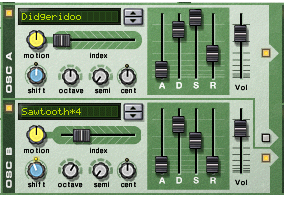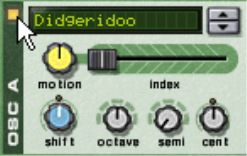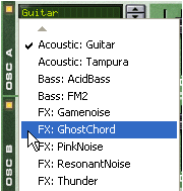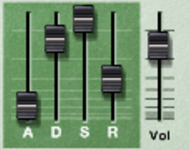|
|
Note that the Malström’s Graintables are not all of the same length, and that the range for the Index slider (0-127) does not reflect the actual length of the graintables. I.e. regardless of whether a graintable contains 3 or 333 grains, the Index slider will always span the entire graintable even though the slider range says 0-127.
|
What it actually does is change the pitch of a segment up or down by re-sampling. However, since the pitch you hear is independent of the actual pitch of the graintable (see above), pitch-shifting a segment instead means that more or less of the segment waveform will be played back, resulting in a change of harmonic content and timbre.
When a graintable is looped (i.e. if the Motion knob is not set all the way to the left), it follows one of two possible motion patterns:
The motion speed can be changed with the Motion knob, as described above, but it is not possible to alter the motion pattern of a graintable.
Each oscillator features a standard ADSR (Attack, Decay, Sustain, Release) envelope generator, and a Level control. These are used for controlling the volume of the oscillator. One thing that makes the Malström different from many other synths though, is the fact that the amplitude envelopes are placed before the filter and routing sections in the signal path.





